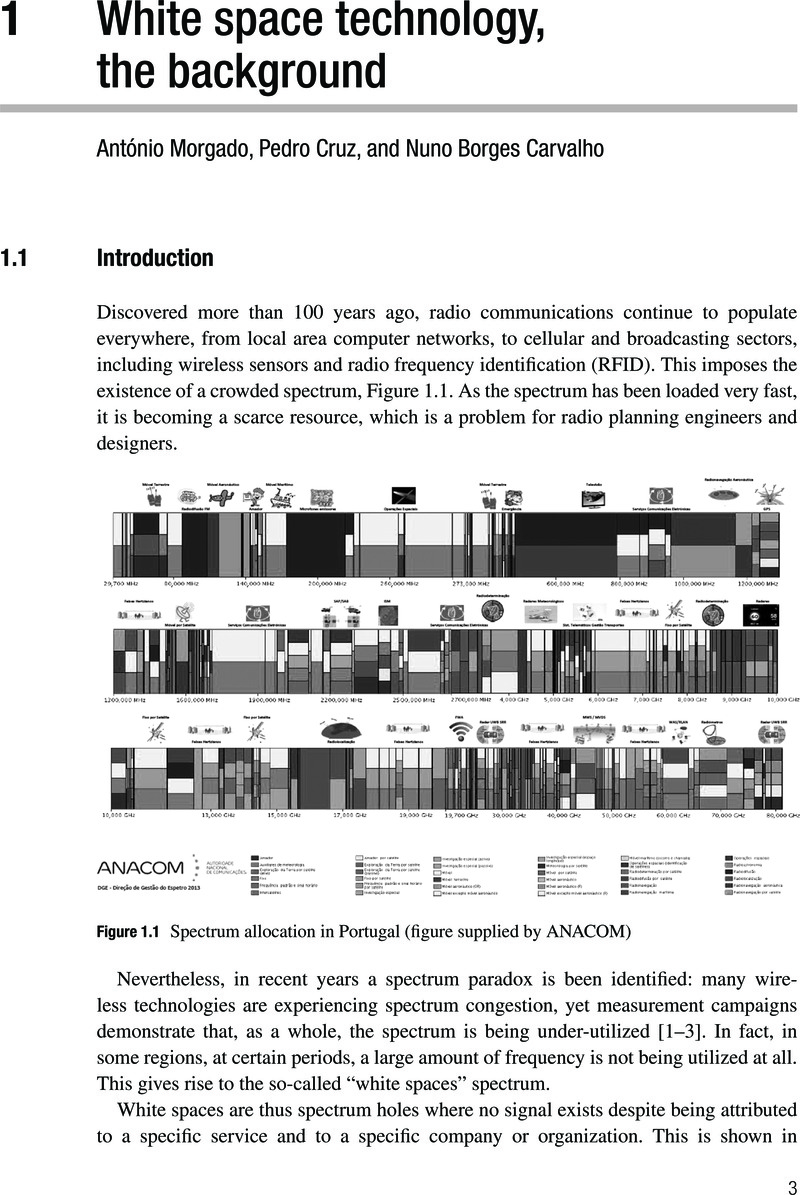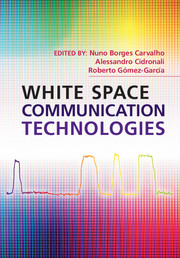Book contents
- Frontmatter
- Contents
- List of contributors
- Preface
- List of abbreviations
- Part I White space technology signal processing and digital design
- 1 White space technology, the background
- 2 Transceiver challenges for white space radio
- 3 Front-ends for software-defined radio
- Part II Adaptable receivers for white space technologies
- Part III Adaptable transceivers for white space technologies
- Index
- References
1 - White space technology, the background
from Part I - White space technology signal processing and digital design
Published online by Cambridge University Press: 05 October 2014
- Frontmatter
- Contents
- List of contributors
- Preface
- List of abbreviations
- Part I White space technology signal processing and digital design
- 1 White space technology, the background
- 2 Transceiver challenges for white space radio
- 3 Front-ends for software-defined radio
- Part II Adaptable receivers for white space technologies
- Part III Adaptable transceivers for white space technologies
- Index
- References
Summary

- Type
- Chapter
- Information
- White Space Communication Technologies , pp. 3 - 39Publisher: Cambridge University PressPrint publication year: 2014



